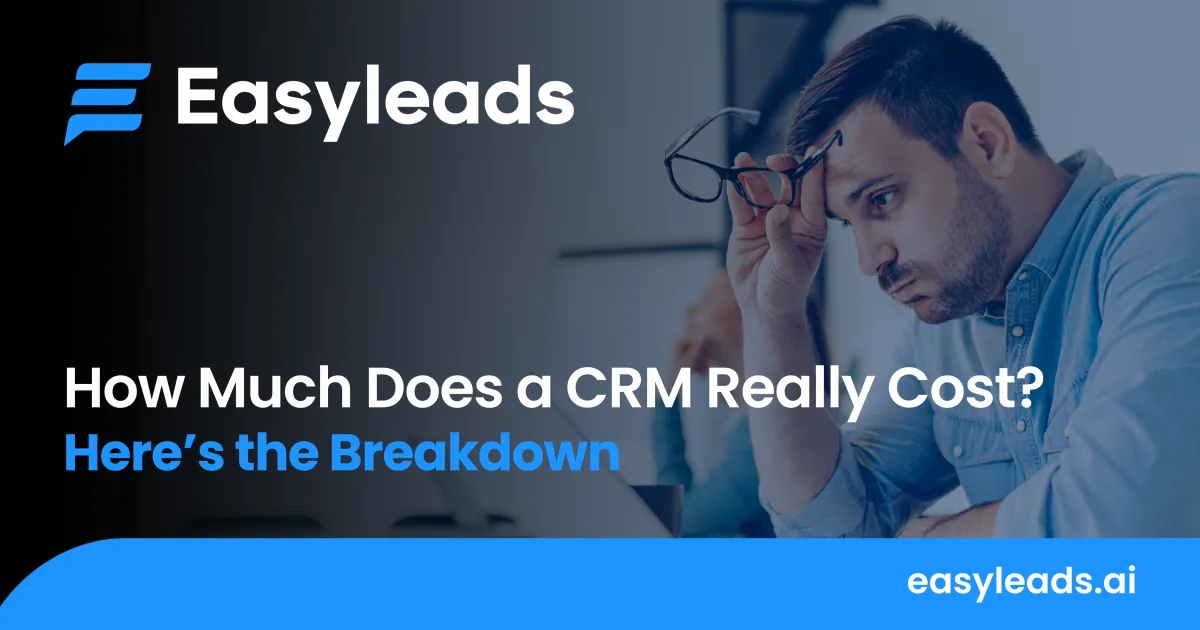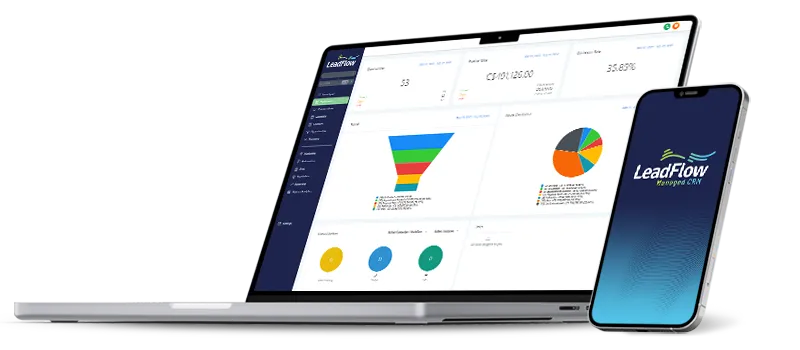Blog

How Much Does a CRM Really Cost?
Here’s the Breakdown
When small business owners start shopping for a CRM, the first question is usually, “What’s it going to cost me?” And while most CRM platforms display pricing front and center, the actual cost of using one, financially and operationally, is often much higher than expected.
Many CRMs are attracting people with free trials or starter plans that seem affordable. But once you start adding users, sending emails, or unlocking automation features, those monthly bills start to rise fast. The pricing looks simple until it’s not.
We’ve talked to dozens of businesses who discovered too late that the CRM they chose came with strings attached, like unexpected feature limitations, support that vanishes, or tools that don’t work without third-party add-ons. That’s why understanding the real cost of a CRM is essential before committing.
What You See Isn’t What You Get
A CRM that promises “free forever” or “all-in-one features” often delivers the basics, and little else. As your business grows, you’ll likely encounter one or more of the following:
Features you assumed were included (like email templates or workflow automations) are only available with higher plans.
You’re charged per user, per email, or per contact, which adds up quickly.
Support is limited to forums or delayed email responses unless you pay extra.
Integrations with tools you already use (like QuickBooks, your website, or social media) require either more subscriptions or workarounds.
One business owner in our research put it plainly:
“The biggest downside is the cost… it can still get pricey quickly. As you grow your company and need more features, it starts to add up.”
Hidden Costs You May Not Expect
Beyond the monthly subscription, there are “soft costs” that don’t show up on your invoice:
Time spent learning the system: If your CRM isn’t intuitive, expect delays and frustration from your team.
Complex setup and onboarding: Connecting forms, emails, calendars, and task management can require hours or days, unless someone does it for you.
Lost leads from poor follow-up: If the system doesn’t help you stay in touch with prospects, you’ll miss sales, and that’s the biggest cost of all.
Small tweaks to your follow-up process can lead to big results, but only if your CRM is supporting those efforts instead of getting in the way.
Three Areas Where You’ll See the Losses Without a CRM
While there are built in costs that come with subscribing to a CRM, there are more significant losses that small businesses see without a system that helps you manage your customers, from the point of contact to the time when you close the deal.
1. Capturing Leads (Or Not)
Leads come from everywhere: your website, social media, referrals, or in-person meetings. If your CRM isn’t integrated across all those touchpoints, some of those leads slip through the cracks.
Without a system that provides visibility across multiple platforms, businesses can’t see what’s working versus what’s falling flat.
2. Nurturing Relationships (Without Spamming)
Most prospects won’t buy on the first interaction. They need reminders, valuable information, and reasons to trust your brand.
But let’s be honest, most small businesses don’t have time to send carefully timed emails to every lead. And yet, nurturing is where trust is built. An effective system uses pre-built email sequences that deliver relevant content over time, without sounding robotic or salesy.
Done right, this can be the difference between a lead that goes cold and one that turns into a loyal customer.
3. Converting Sales Without Friction
The final step, turning a warm lead into a paying client, is where many businesses stumble. They’ve invested time and effort in attracting leads, but don’t have a clear process for closing the deal.
That might mean:
No quote templates or e-signature tools
Manually creating invoices in another system
Delays in follow-up because the CRM doesn’t flag aging opportunities
A good CRM can send a quote, track lead activity, collect a signed contract, and send an invoice, all within minutes. No extra software, no back-and-forth emails, and no missed follow-up.
Why a Managed CRM Makes Sense for Small Businesses
Let’s face it. Most small business owners aren’t trying to become CRM experts. You just want something that works, doesn’t cost a fortune, and helps you stay organized without adding more work.
That’s why Easyleads is a managed CRM with no-surprise pricing. We set it up, customize it to your business needs, and provide support every step of the way.
So, How Much Does a CRM Really Cost?
In short: more than you think, but less than it should, if you’re using the right one.
Here’s what to watch for:
Subscription creep: You start at $50/month, but you’re paying $600 before long.
Wasted time: If your team can’t use the CRM effectively, it’s just expensive software sitting idle.
Lost sales: A CRM that doesn’t follow up for you (or help you prioritize leads) is costing you revenue every week.
But the biggest cost? Missed opportunity. That list of leads sitting untouched in your inbox or spreadsheet is money left on the table.
Want to see what a CRM can do when it’s actually set up to help you? Let’s book a quick demo and walk through Easyleads with no pressure and no tech headaches.

Copyright Easyleads CRM 2023 - Privacy Policy - All Rights Reserved

